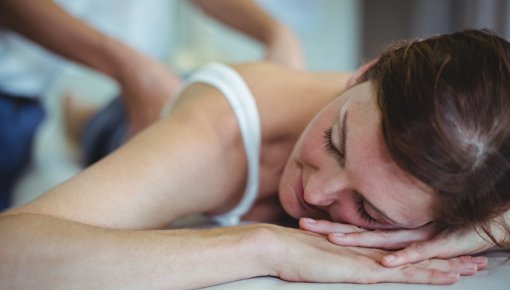Bundesärztekammer (BÄK), Kassenärztliche Bundesvereinigung (KBV), Arbeitsgemeinschaft der Wissenschaftlichen Medizinischen Fachgesellschaften (AWMF). Nationale Versorgungsleitlinie Nicht-spezifischer Kreuzschmerz (in Überarbeitung). AWMF-Registernr.: nvl-007. 2017.
Chenot JF, Greitemann B, Kladny B et al. Nichtspezifischer Kreuzschmerz. Dtsch Arztebl Int 2017; 114(51-52): 883-890.
Chou R, Deyo R, Friedly J et al. Noninvasive Treatments for Low Back Pain. (AHRQ Comparative Effectiveness Reviews; No. 169). 2016.
Chou R, Deyo R, Friedly J et al. Nonpharmacologic Therapies for Low Back Pain: A Systematic Review for an American College of Physicians Clinical Practice Guideline. Ann Intern Med 2017; 166(7): 493-505.
Ebadi S, Henschke N, Forogh B et al. Therapeutic ultrasound for chronic low back pain. Cochrane Database Syst Rev 2020; (7): CD009169.
Ferreira GE, McLachlan AJ, Lin CC et al. Efficacy and safety of antidepressants for the treatment of back pain and osteoarthritis: systematic review and meta-analysis. BMJ 2021; 372: m4825.
Franke H, Franke JD, Fryer G. Osteopathic manipulative treatment for nonspecific low back pain: a systematic review and meta-analysis. BMC Musculoskelet Disord 2014; 15: 286.
Franke H, Fryer G, Ostelo RW et al. Muscle energy technique for non-specific low-back pain. Cochrane Database Syst Rev 2015; (2): CD009852.
Mu J, Furlan AD, Lam WY et al. Acupuncture for chronic nonspecific low back pain. Cochrane Database Syst Rev 2020; (12): CD013814.
Nielsen SM, Tarp S, Christensen R et al. The risk associated with spinal manipulation: an overview of reviews. Syst Rev 2017; 6(1): 64.
Skelly AC, Chou R, Dettori JR et al. Noninvasive Nonpharmacological Treatment for Chronic Pain: A Systematic Review Update. (AHRQ Comparative Effectiveness Reviews; No. 227). 2020.
Wu LC, Weng PW, Chen CH et al. Literature Review and Meta-Analysis of Transcutaneous Electrical Nerve Stimulation in Treating Chronic Back Pain. Reg Anesth Pain Med 2018; 43(4): 425-433.
IQWiG health information is written with the aim of helping people understand the advantages and disadvantages of the main treatment options and health care services.
Because IQWiG is a German institute, some of the information provided here is specific to the German health care system. The suitability of any of the described options in an individual case can be determined by talking to a doctor. informedhealth.org can provide support for talks with doctors and other medical professionals, but cannot replace them. We do not offer individual consultations.
Our information is based on the results of good-quality studies. It is written by a team of health care professionals, scientists and editors, and reviewed by external experts. You can find a detailed description of how our health information is produced and updated in our methods.

